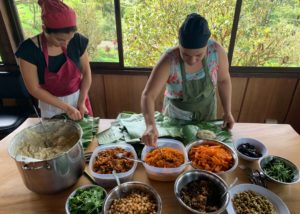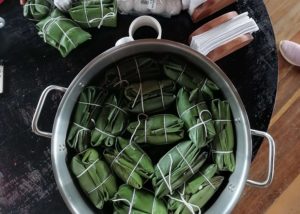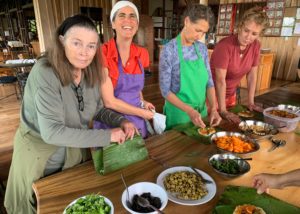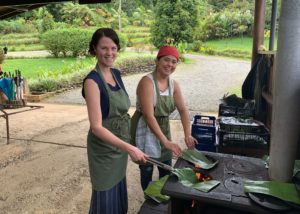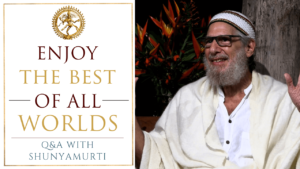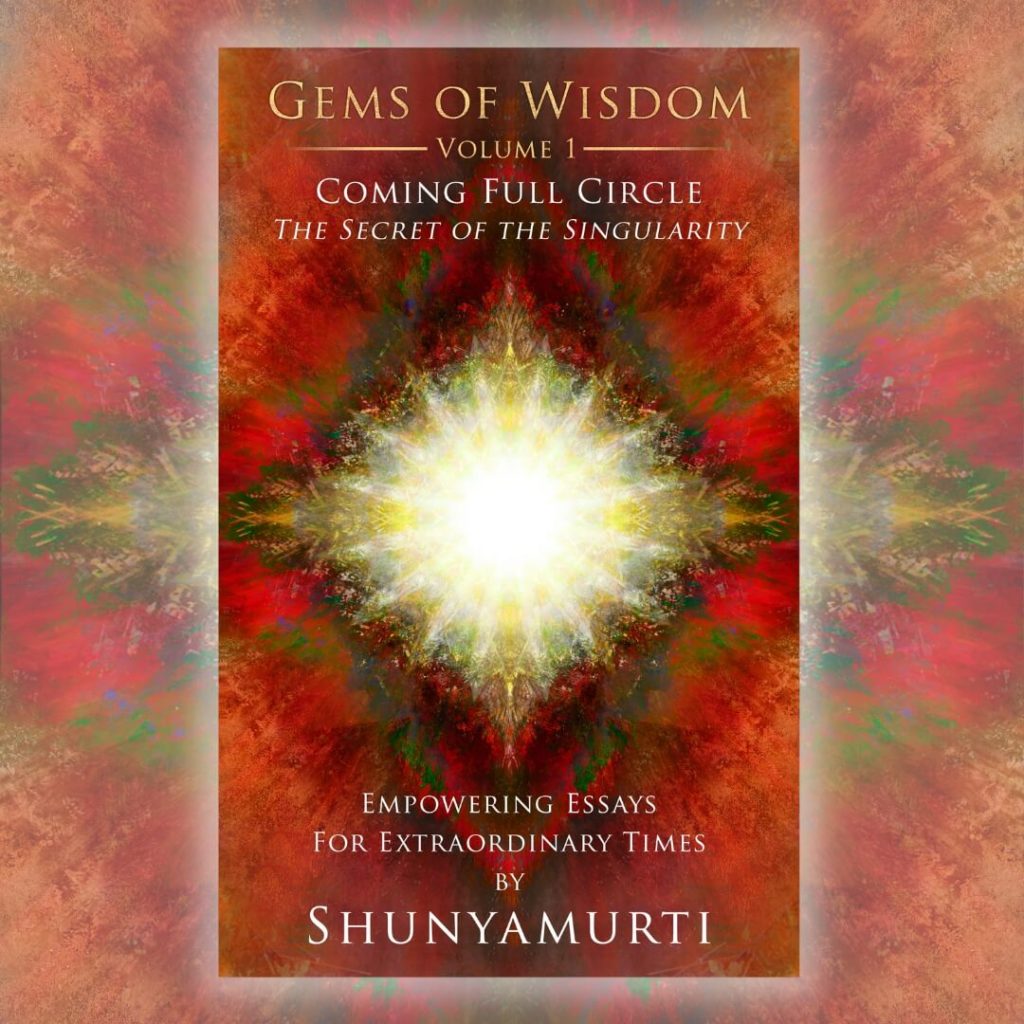By Amrita
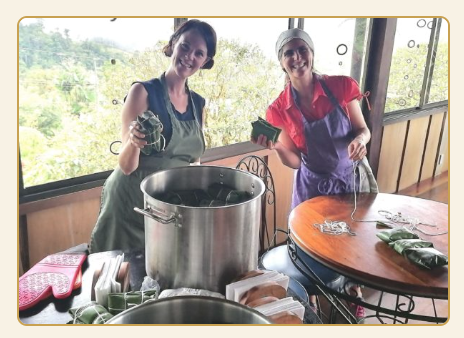
Recipe for 1 large pizza / 20 slices
Serves 4 – 5 people
Celebrating Tico-Style
This holiday season, the ashram embraced the age-old, Costa Rican tradition of making tamales! When you ask a Tico (the local name for a Costa Rican person) what they eat on Christmas, most likely the answer will be tamales!
I still have the most delightful memories from when I first visited Costa Rica almost 20 years ago, and a Tico family I had become very close with invited me to make tamales with them. It was profoundly impacting to be a part of this multigenerational event, as the extended family came together to share in making this traditional treat for each other. Ever since that first tamal experience, I felt a deep resonance with the love that unites Ticos during this special holiday season.
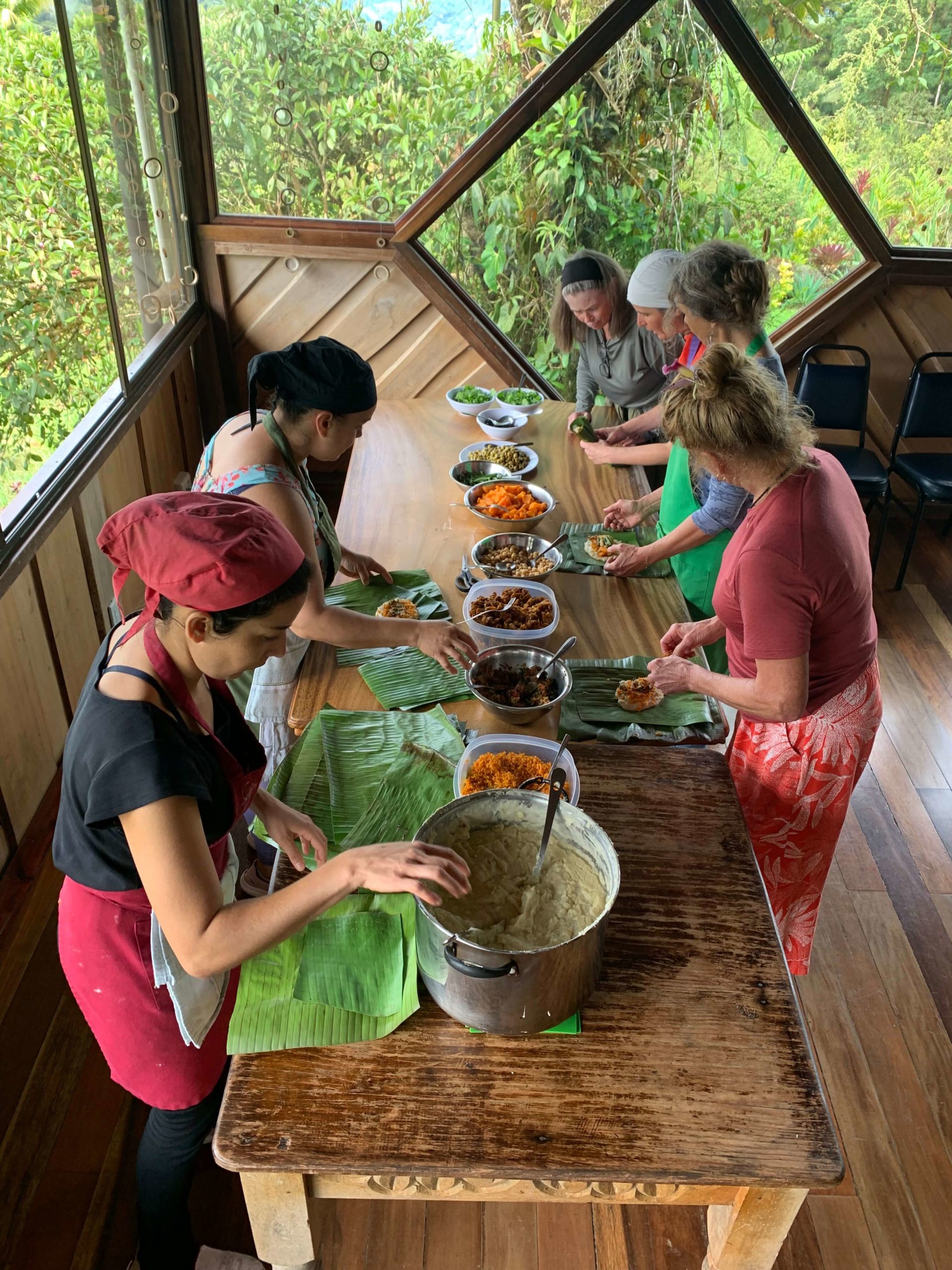
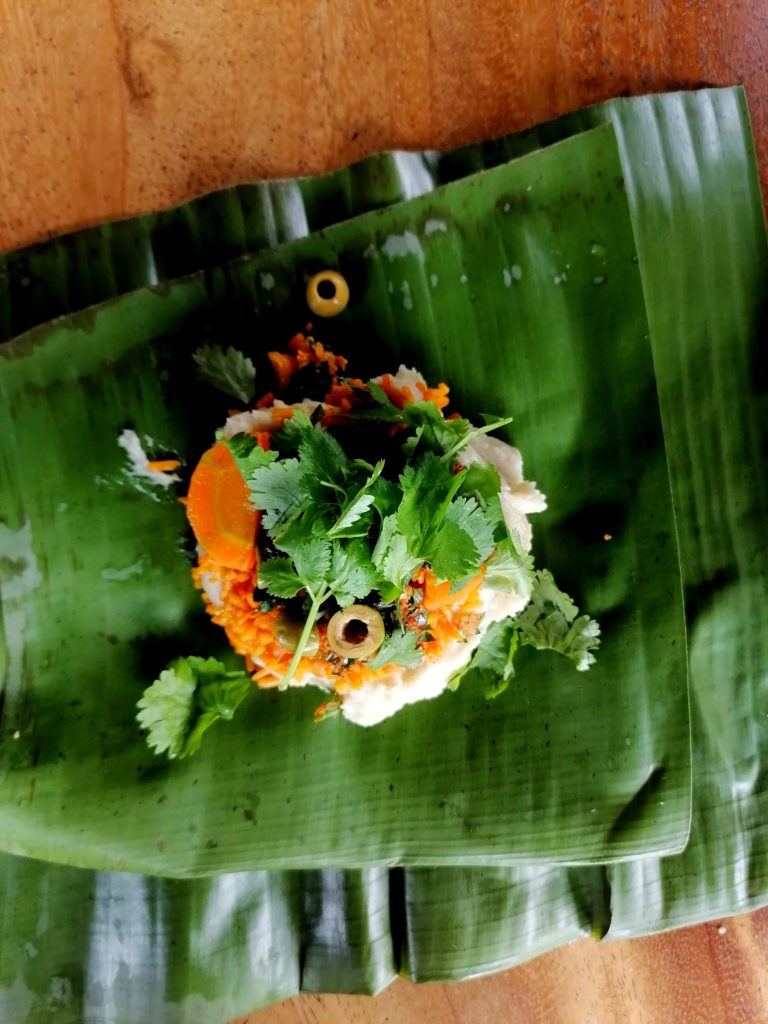
The tamal is believed to date back as early as 7000 BC. It is derived from the word tamalli, from the Indigenous Aztec language Nahuatl, which means “wrapped food.” In Latin America, there are various types of tamales that have been adapted to incorporate the locally available foods of each country and region.
The Costa Rican Christmas tamales are made with a corn masa (dough) and filled with a variety of toppings that include rice, garbanzos, vegetables, and usually some type of meat, all wrapped in a banana leaf and boiled on a wood-fired stove. Tamales in this country have become a symbol of Christmas, and gift-giving in particular, as the banana leaf wrap resembles a wrapped present–you have to unwrap the banana leaves to get to the gift of the tamal! During the holiday season, if you go to someone’s house, you are usually greeted with coffee and tamales. What a gift!
A New Ashram Tradition
For many years, our ashram community purchased vegetarian tamales for Christmas Eve dinner. But being intrepid connoisseurs of sustainable and self-sufficient practices–particularly when it comes to food gifts from Source–we decided to embrace this ancient, celebratory tradition the Sat Yoga way! After much planning and consultations with our local workers, neighbors, and Tico community members, we dedicated a day to making our own Christmas tamales.
At the ashram, we are blessed to have a wonderful team of local workers who have become our extended family, and once we told them that we were going to make our own tamales, they were very haji (an enthusiastic agreement!) to share their tamal family traditions and secrets. The agricultural workers gathered the perfect banana leaves (as we learned, some are better suited for wrapping than others), cut the stems, and heated them, so they became more malleable. Using a wood-fired stove to heat the banana leaves gave a naturally smokey flavor to the tamales, which gives it an extra tasty touch. Our Tamales have been assembled with: Corn masa, achiote rice, garbanzos, jackfruit “meat”, vegetables, olives, and prunes. When it was time to put all of this delicious abundance together to make the tamales, our Tica kitchen workers and housekeepers showed us how to layer the ingredients, how to wrap them without the ingredients oozing out, and how to finish them off with a special tie so they don’t unwrap while boiling. It was a sangha (community) endeavor, together with our workers and with our Shakti Saturation program participants, to make enough tamales for our Christmas Eve dinner. After the tamales were assembled, we cooked them on our wood-burning stove for an “off-grid moment!” And once they were ready, we waited patiently to share these little gifts with each other on Christmas Eve–and it was well worth the wait!
This experience has been joyful, insightful, educational, and delicious! From our holiday hearts to yours, we wish you a very special and sacred holy-day season that is filled with Joy, Peace and Bliss.
Namaste,
Amrita
Who doesn’t LOVE pizza, especially when it is made with LOVE..and ingredients freshly harvested from our greenhouses, a gluten-free root-based crust from our food forests, and homemade cheese locally sourced from our neighbors (if you wish), or a cheeseless vegan version (if you prefer)! Biting into a slice of this farm to table pizza, and being able to locate every single ingredient to its source, is a rewarding factor that serves to multiply the deliciousness.
Being a predominantly gluten-free kitchen focused on healthy, homegrown, live food, our ashram kitchen, lovingly known as Ruchira (which means delicious, sattvic, bright, and beautiful) had only served pizza a handful of times over the last few years, as a special treat for celebrations. That was until Radha Ma, using her resourceful and creative prowess, turned some leftover boiled malanga (a robust root that grows here in abundance) into a root-based pizza crust, using only two other ingredients–yucca flour and salt. Not only did it make an incredible thin and crispy pizza crust, it added a real depth of flavor that stands up to your standard pizza crust. And so the experiments began, refining the recipe and process, trying different roots, and taste testing too!
Explore divine vegetarian cuisine in
Radha Ma’s Recipes for a New Sat Renaissance cookbook!
Creating pizza crusts with our plethora of roots is a creative solution to utilizing the abundance we have been gifted from the land–and to enjoying guilt-free, gluten-free pizza. We have yet to try a root that doesn’t work: malanga, ñampí (also known as taro), yucca and camote (sweet potato) have all been a success. This year, we have been growing 3 different colors of camote–purple, orange, and white. Each one has a unique flavor, and each one will work for the pizza base, however, the purple one won the right to this recipe due to its spectacular vibrancy! Team it up with farm-fresh toppings such as broccoli, red peppers, zucchini–or whatever you have on hand. Something we love to add is a drizzle of our vegan pesto, a great addition when the greenhouse is full of basil blooming! Just before serving, scatter fresh arugula on top and it will look and taste straight out of a gourmet pizza joint! It’s a simple, fuss-free recipe, and easier than making a traditional pizza dough, so if you haven’t already, we encourage you to try it.
As the ashram endeavors evermore toward a sustainable diet, we are increasingly inspired to create and share recipes that showcase the abundance of Arunachala, our mountain-top abode. There’s such a joy that comes from watching as the seeds are sown and the camotes are planted, and waiting patiently for its fruits, putting in the hard labor to make our own yucca flour, receiving cheese direct from one of our neighborhood workers whose family raises cows, creating a tomato sauce from the wild abundance of tomatoes that the greenhouse has produced, and then using what the land has to offer for the toppings, be it zucchini, broccoli, pineapples, or other more exoctic delights, such as heart of palm, or pejibayes (palm fruit). You will never want to order a pizza “to go” again!
In-joy!
Namaste,
Tara
Ruchira Supervisor
PS- Our ashram “prema”-culture team (prema means divine love!) has been creating joyful, beautiful, and information-filled harvest reports for many years, documenting our growth, challenges, and bountiful successes. And we now have the great joy of sharing them with our global community through our website blog page.
Please visit and share in the Infinite Beauty: Ashram Life Blog

